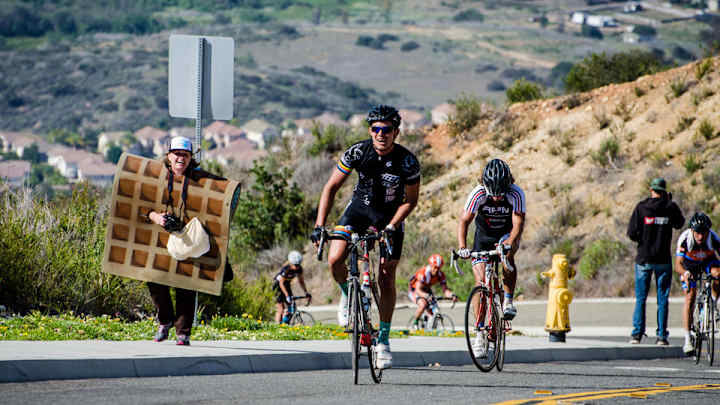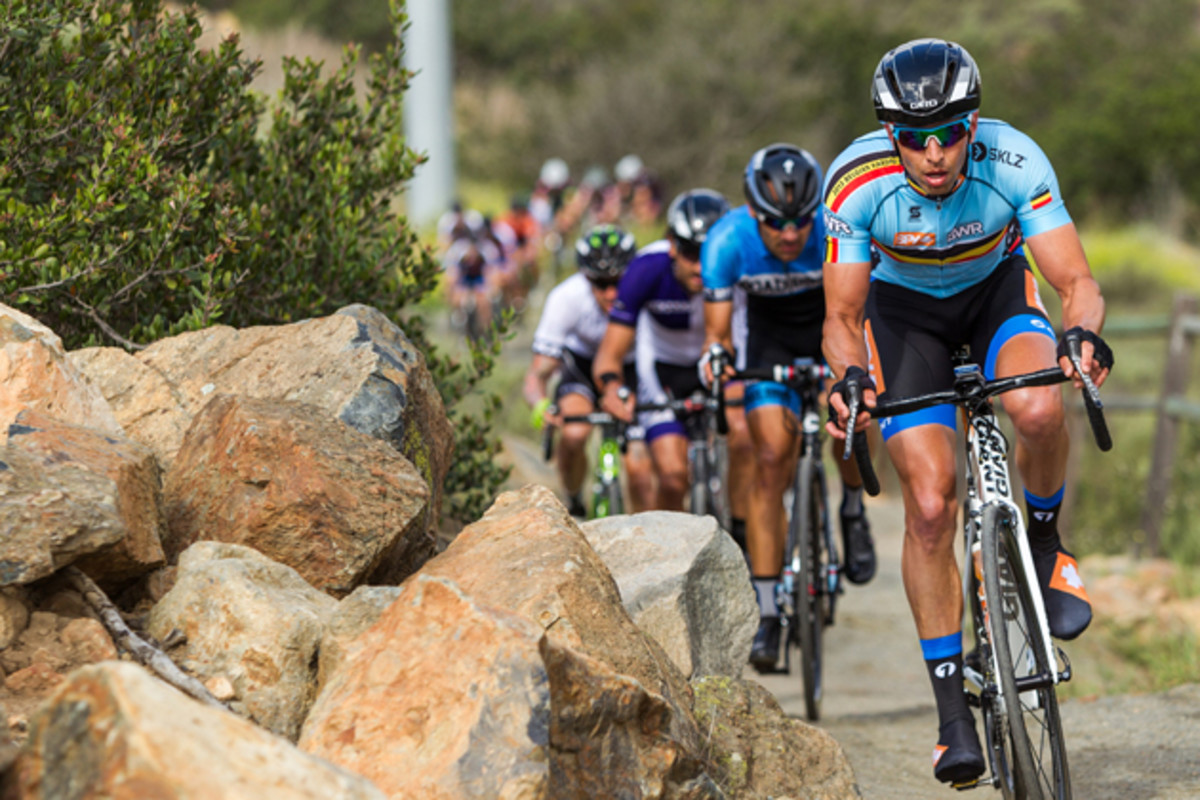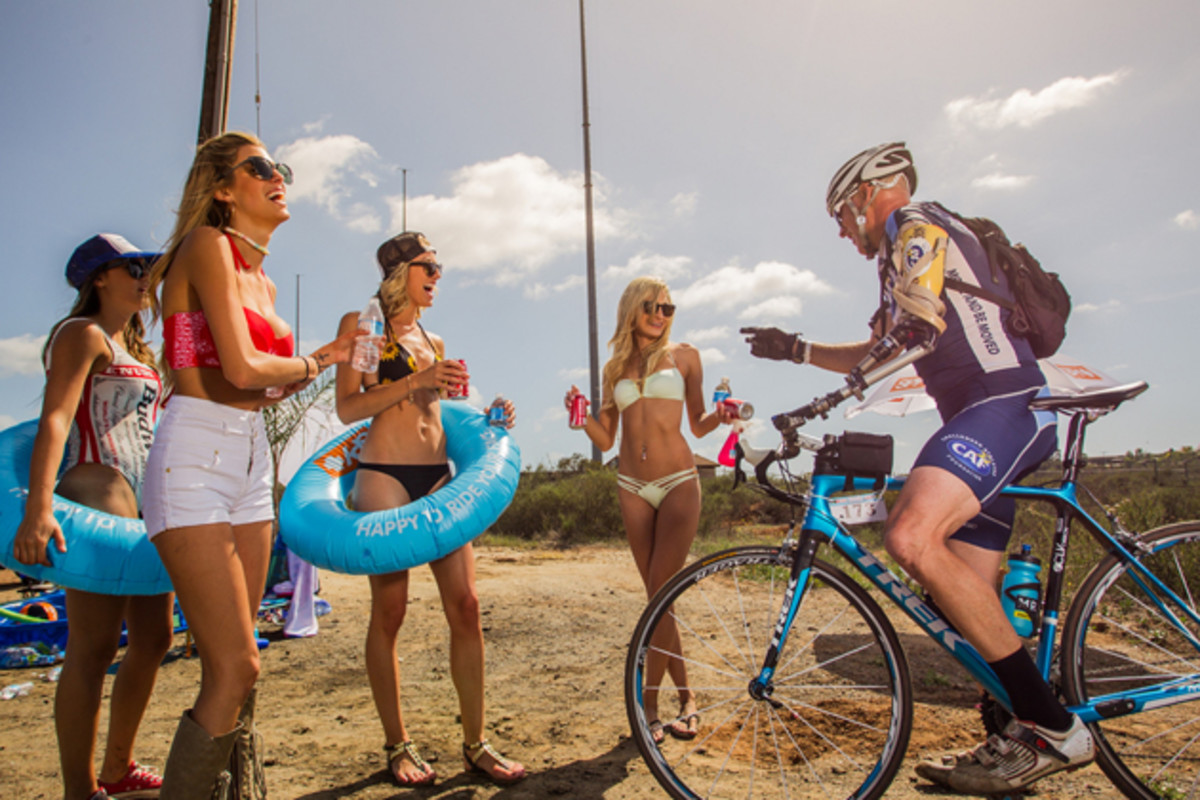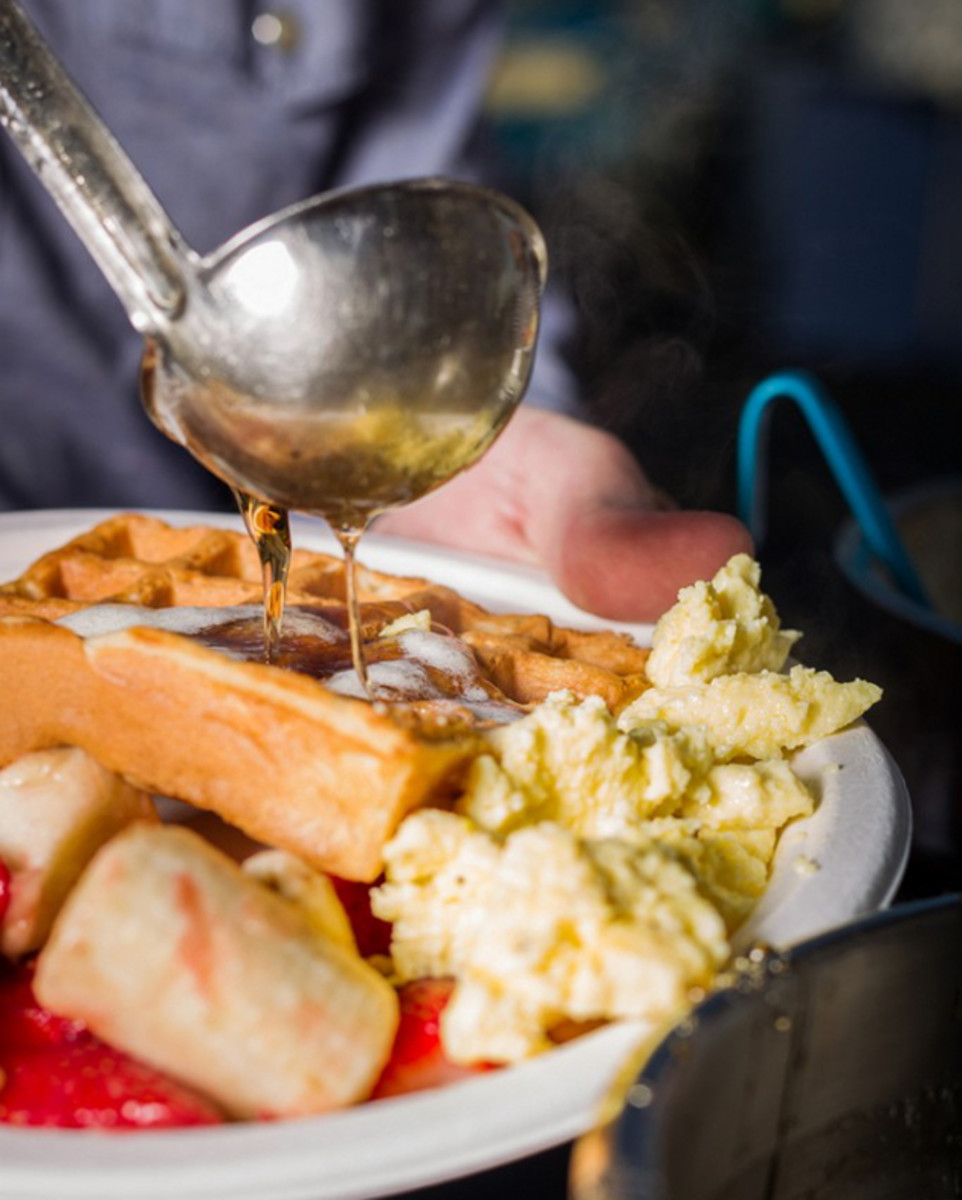The Belgian Waffle Ride serves up a unique but tough cycling experience

Don’t mind the 142.5-mile bike course run on dirt, sand or gravel for more than 33 miles. Or, for that matter, the 11,000 feet of climbing required over the course of the ride. It is, after all, just the way things run in Belgium.
This year’s fourth running of the SPY Belgian Waffle Ride on April 26 near Carlsbad, Calif., provides a window into Belgian-style racing. “I’m Belgian,” says Michael Marckx, the race’s organizer and president of San Diego-based Spy Optical. “There are no mountains in Belgium, just rolling hills. We make it so it is constantly undulating.”
Each year Marckx augments the race to work in more challenging terrain, whether it's dirt, gravel, cobblestone, sand or any non-asphalt type of terrain. “I really want the race to be as close to as what you would find in Belgium, as we have all this to offer here in San Diego,” he says. “I do adhere to classic sensibility with a longer race and undulating sections to test the strength of the bike and rider.”
Staying strong from tires to mind has proven the backbone of Neil Shirley, two-time winner of the race. “It is one of those events where you need to be so prepared physically, mentally and also mechanically,” he tells SI.com. “Everything has to come together and you still need a lot of luck.”

Each year the Belgian Waffle Ride caps participants at 500 riders. This year a new Belgian Wafer Ride allows an extra 300 riders to take part in a half-length version. The mix of riders includes those who want to go out and win it and others taking on the adventure, hoping to finish it.
“It makes for a really cool vibe,” Shirley says. “I look at the route each year and have a little bit of fear. It is a really big day, but that is the desire for these types of events, you want to go out and really push.”
Shirley, a former professional mountain bike racer, says most races make speed the most challenging factor, but on this one, people don’t even know if they can actually get through the 140-plus miles. “Most do and surprise themselves,” he says.
Lance Armstrong in exile is restless, feisty and . . . underappreciated?
“With the amount of riders we have, most people are in survival mode,” Marckx says. “About 20% want to race for a time or place and even among the 20% at some point they abandon the idea of being competitive and segue quickly into the idea of just surviving.”
The course itself runs in two loops, with the first an easier ride than the second. Shirley says the pinnacle of toughness was “double peak,” a daunting 15% grade that came over 120 miles into the ride. “At that point of the event, you are crawling,” he says. “You are dead. Under normal conditions it is not super long, but at that point it feels like an eternity.”
The climbs are where Shirley says he has won the race the last two years. And as a 10-year professional, he says he fully understands pacing, his body’s needs and proper nutrition during the ride. “A lot of guys might be equally as strong, but tend to fade because they don’t look after themselves,” he says.
Apart from climbs and the grueling length, adding in dirt, gravel and even some streams creates a more challenging environment and requires riders to really think about how they will mechanically prepare for the race.

“I don’t want to create something where people can’t use a road bike, but I want people to think very seriously about the bike that will be the most comfortable and afford the greatest potential of finishing,” Marckx says.
“Some of the combination of the dirt sections are like pure mountain bike trails, but you have to navigate on a road bike,” Shirley says. “If you rode a mountain bike, you’d be a whole lot slower on the paved sections.”
Shirley, also a bike magazine editor, says he has the benefit of all types of gear available to him. What he’s found works for him—and most riders—is to put the biggest tires possible on a road bike frame. He goes from his typical 25 mm wide tires to 28 mm for the Belgium Waffle Ride. “The tires are not a huge disadvantage on the road, but the width helps in the dirt section,” he says. “The race is not won on the dirt, but it is easily lost on the dirt.”
Shirley also recommends adding in really low gears for climbing, changing the rear cassette for the really steep sections. “Your legs start failing you and having some bailout gears is really important for finishing and enjoying the last part of the ride,” he says.
Marckx, who not only painstakingly designs the course, but also rides it, says he was grappling with his gear decision just weeks before the race, not sure if he was going to go with 27 mm or 28 mm tires on a road bike or switch to a cyclecross bike—the other most popular choice.

While the ride itself is a mental challenge, SPY tries to up the fun factor of the weekend, hosting a full festival event at the Lost Abbey Brewery, complete with Belgian waffles before the race and Belgian ale after. During the ride people on the course dressed in costumes “doing crazy stuff” adds character and at around 120 miles, at a point “when you are ready to die,” riders come upon “the oasis” of girls in bikinis spraying water.
“People stop and breathe it all in,” Marckx says. “The ride is punctuated with all this crazy stuff. It is fun and irreverent.”
After 11,000 feet of climbing on 14 sections of uneven terrain over 140 miles, the finish-line Belgian waffles and ale never tasted so good.
Tim Newcomb covers stadiums, design and gear for Sports Illustrated. Follow him on Twitter at @tdnewcomb.
